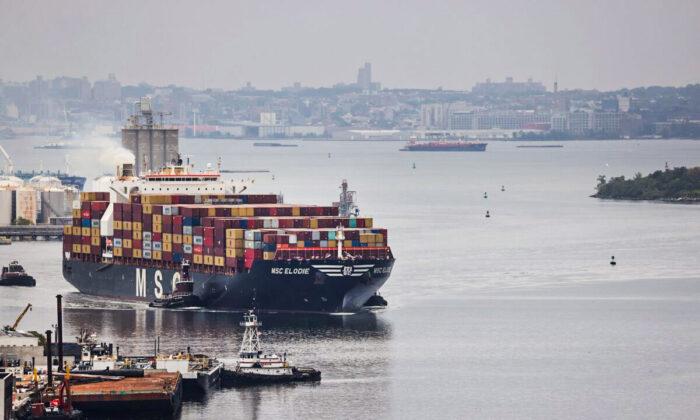Further supply chain disruption, COVID-19 flare-ups, and central bank missteps are the top risks to the world economy in 2022, according to a Reuters poll of over a hundred economists, with a significant number of them predicting inflation is likely to dent the recovery.
About one-quarter of 171 economists responding to a question about key risks to the global economic recovery said more supply chain disruptions or upticks in COVID-19 infections were the top risks. A similar proportion said central banks pulling back on stimulus too quickly was one of the chief downside risks to economic recovery.
Around two-thirds of economists, 117 of 182, who responded to an extra question, said the recent surge in global inflation was unlikely to persist over the next 2–3 years, though the remaining 65 said persistently higher inflation was likely.
Among those that expect higher inflation to stick around longer, over 60 percent said there was a high risk it pulls down global economic growth. At the same time, the polled economists raised their expectations for the rate of inflation in the vast majority of developed economies by between 0.1 and 0.7 percentage points.
“Supply chain disruptions and inflation are taking a toll on the economy and many consumers. And they may be sticking around for a while still,” Bankrate senior economic analyst Mark Hamrick told The Epoch Times in an emailed statement.
The poll comes as supply chain disruptions have rattled markets and put consumers on edge, driving up producer costs and consumer prices. The surge in consumer inflation has put pressure on central banks to start dialing back loose monetary policies, though some policymakers fret that patches of weakness remain in the economic recovery, particularly in terms of labor markets.
“Many major central banks are now cautiously shuffling towards the exit when it comes to their ultra-loose monetary policies. They aren’t doing this because of the strength of the economic recovery,” said Jan Lambregts, head of global economics and markets research at Rabobank.
The total number of unemployed persons in the United States now stands at 7.7 million, and while that’s considerably lower than the pandemic-era high, it remains elevated compared to the 5.7 million just prior to the outbreak. The unemployment rate, at 4.8 percent, also remains above pre-pandemic levels.





